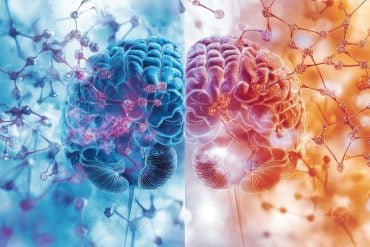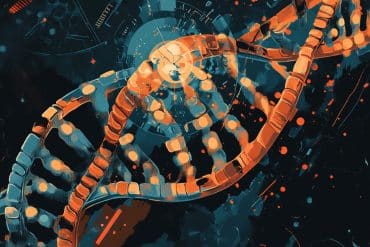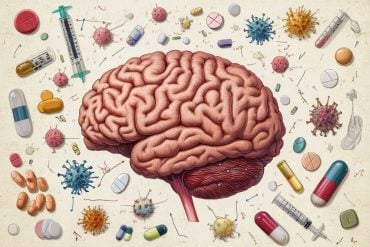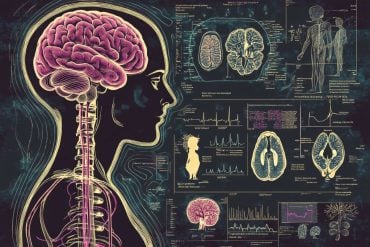Summary: A new study reveals fMRI imaging and behavioral measures could be biomarkers for predicting those at risk of developing psychosis. Researchers report people at risk of psychosis have problems in activating the striatum when they receive feedback based learning.
Source: University of Missouri Columbia.
Psychotic disorders often are severe and involve extreme symptoms such as delusions or hallucinations in which people lose their sense of reality. Researchers at the University of Missouri recently found evidence that boosting how well people at risk for psychosis learn from positive and negative feedback could potentially keep psychosis at bay. The team also found that brain scans using functional magnetic resonance imaging, coupled with behavioral measures, could provide markers for the diagnosis of psychosis risk. Researchers hope findings will help mental health professionals to understand how to better treat their patients with psychoses and prevent the onset of psychosis.
“Around the time Nobel Prize winner John Nash first developed psychosis he turned down an endowed chair at the University of Chicago because he said he believed he was going to become the emperor of Antarctica– despite the population of Antarctica being zero,” said John G. Kerns, professor of psychological sciences in the MU College of Arts and Science. “How a genius like John Nash could develop a delusion has long baffled clinicians and scientists. We wanted to examine whether dysfunction in a brain region called the striatum and a disruption in feedback-based learning were related to risk for psychosis.”
Feedback-based learning helps learners raise their awareness of strengths and weaknesses and identify actions to be taken to improve. It is heavily dependent on varying levels of dopamine, a neurotransmitter that sends signals to other nerve cells, specifically located in a specialized part of the brain called the striatum. Dopamine in the striatum provides an important teaching signal that increases or decreases the chance that certain thoughts and actions occur again in the future.
In research conducted at the Mizzou Brain Imaging Center and using a feedback-based learning task, Kerns and his team found that people at risk for psychosis are impaired when they need to rely on feedback to learn. Using fMRI brain scans, the team found that people at risk for psychosis failed to activate the striatum when they received feedback.
“Current research suggests that people like John Nash develop delusions in part because they have problems learning from feedback, like a car driving without a brake,” Kerns said. “Our research is also consistent with other research that people with psychosis have an increased level of dopamine in the striatum. However, for the first time we have linked psychosis risk to both a behavioral impairment, poor feedback learning, as well as striatum dysfunction.”

It is also hoped that this research will be useful in detecting risk for psychosis, Kerns said. Measuring dopamine in the striatum is both invasive and expensive and cannot be done in routine clinical assessment. However, Kerns found that non-invasive measures can be used in every day clinical practice to effectively detect striatal dysfunction. Ultimately, Kerns believes this research will help professionals both detect risk and prevent psychosis, which could mean decreased suffering for many people and their families.
Funding: Funding was supported by the National Institute of Mental Health (Grants: MH014677 and MH100359) and University of Missouri research funds. The content is solely the responsibility of the authors and does not necessarily represent the official views of the funding agencies.
Source: Jeff Sossamon – University of Missouri Columbia
Publisher: Organized by NeuroscienceNews.com.
Image Source: NeuroscienceNews.com image is credited to John Kerns.
Original Research: Abstract for “Probabilistic Category Learning and Striatal Functional Activation in Psychosis Risk” by Nicole R Karcher, Jessica P Y Hua, and John G Kerns in Schizophrenia Bulletin. Published March 24 2018.
doi:10.1093/schbul/sby033
[cbtabs][cbtab title=”MLA”]University of Missouri Columbia “Researchers Find Clues to Treating Psychosis.” NeuroscienceNews. NeuroscienceNews, 16 May 2018.
<https://neurosciencenews.com/psychosis-treatment-9062/>.[/cbtab][cbtab title=”APA”]University of Missouri Columbia (2018, May 16). Researchers Find Clues to Treating Psychosis. NeuroscienceNews. Retrieved May 16, 2018 from https://neurosciencenews.com/psychosis-treatment-9062/[/cbtab][cbtab title=”Chicago”]University of Missouri Columbia “Researchers Find Clues to Treating Psychosis.” https://neurosciencenews.com/psychosis-treatment-9062/ (accessed May 16, 2018).[/cbtab][/cbtabs]
Abstract
Probabilistic Category Learning and Striatal Functional Activation in Psychosis Risk
Background
Psychosis risk is associated with striatal dysfunction, including a previous behavioral study that found that psychosis risk is associated with impaired performance on a probabilistic category learning task (PCLT; ie, the Weather Prediction Task), a task strongly associated with striatal activation. The current study examined whether psychosis risk based on symptom levels was associated with both poor behavioral performance and task-related physiological dysfunction in specific regions of the striatum while performing the PCLT.
Methods
There were 2 groups of participants: psychosis risk (n = 21) who had both (a) extreme levels of self-reported psychotic-like beliefs and experiences and (b) interview-rated current attenuated psychotic symptoms (APS); and a comparison group (n = 20) who had average levels of self-reported psychotic-like beliefs and experiences. Participants completed the PCLT during fMRI scanning.
Results
The current research replicated previous work finding behavioral PCLT deficits at the end of the task in psychosis risk. Furthermore, as expected, the psychosis risk group exhibited decreased striatal activation on the task, especially in the associative striatum. The psychosis risk group also displayed decreased activation in a range of cortical regions connected to the associative striatum. In contrast, the psychosis risk group exhibited greater activation predominantly in cortical regions not connected to the associative striatum.
Conclusions
Psychosis risk was associated with both behavioral and striatal dysfunction during performance on the PCLT, suggesting that behavioral and imaging measures using this task could be a marker for psychosis risk.






